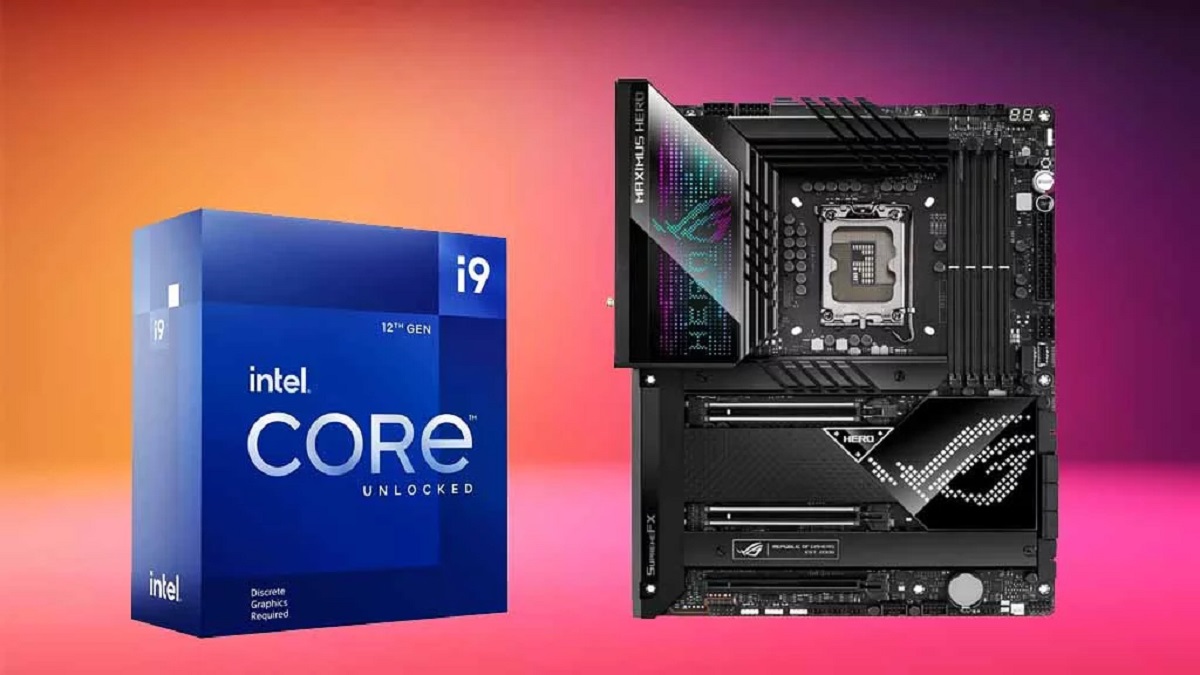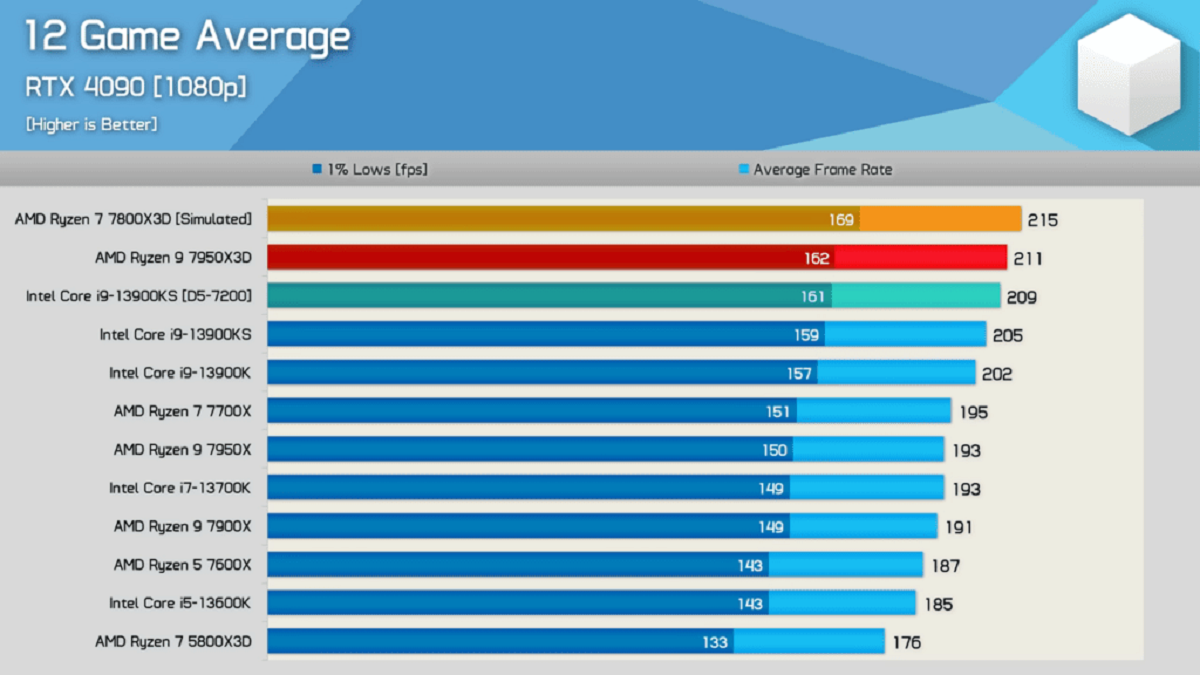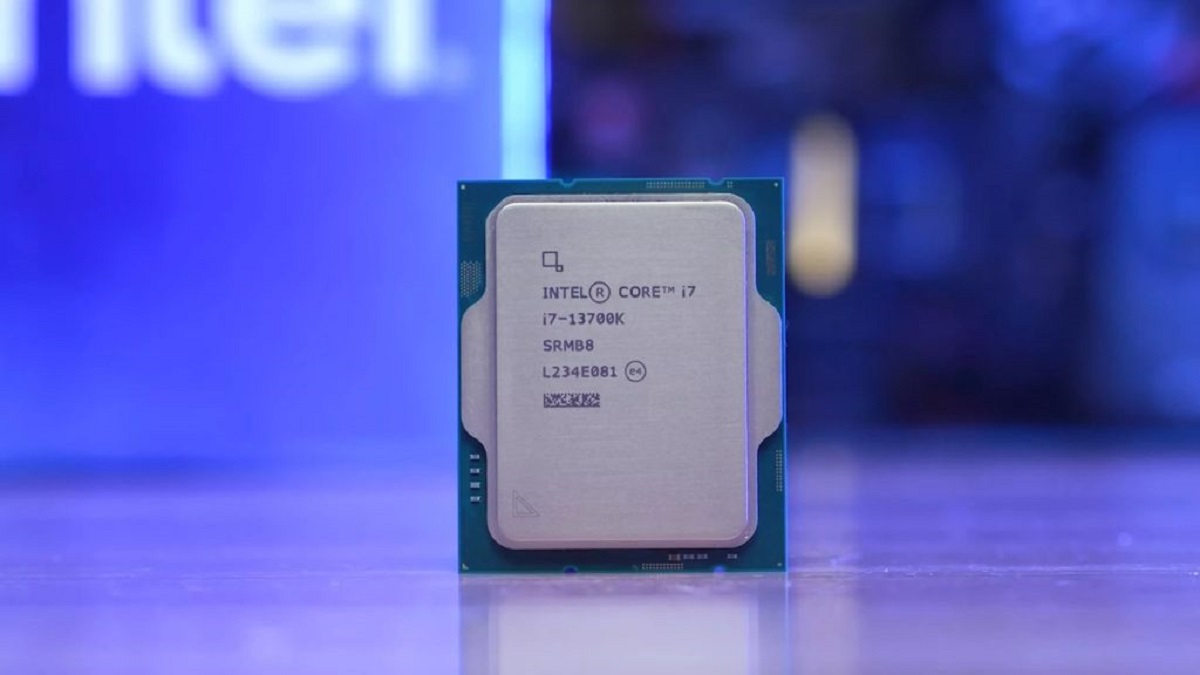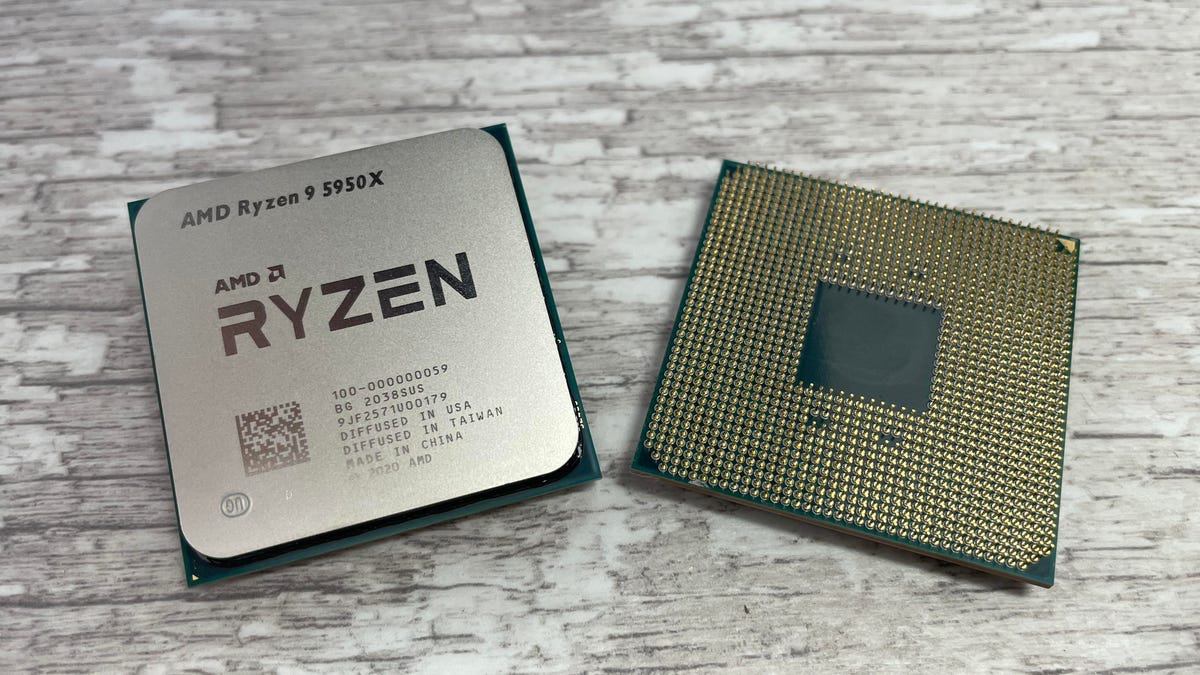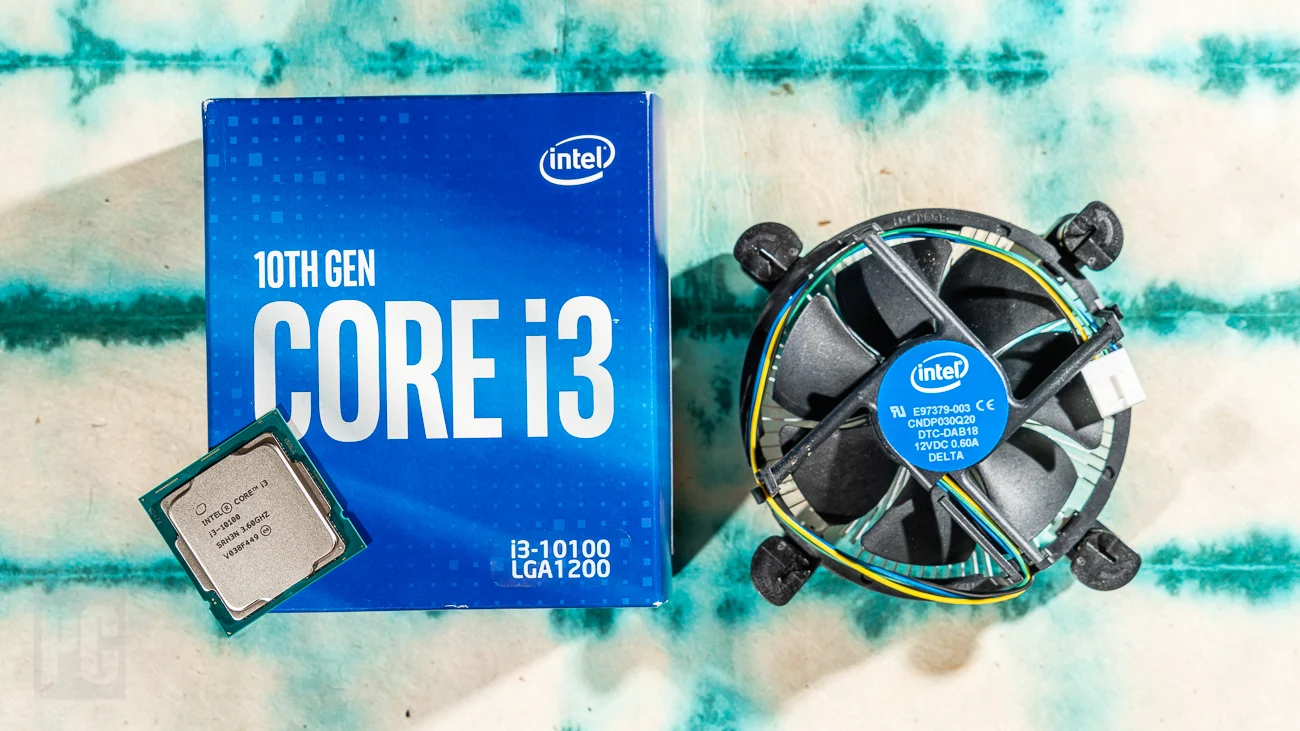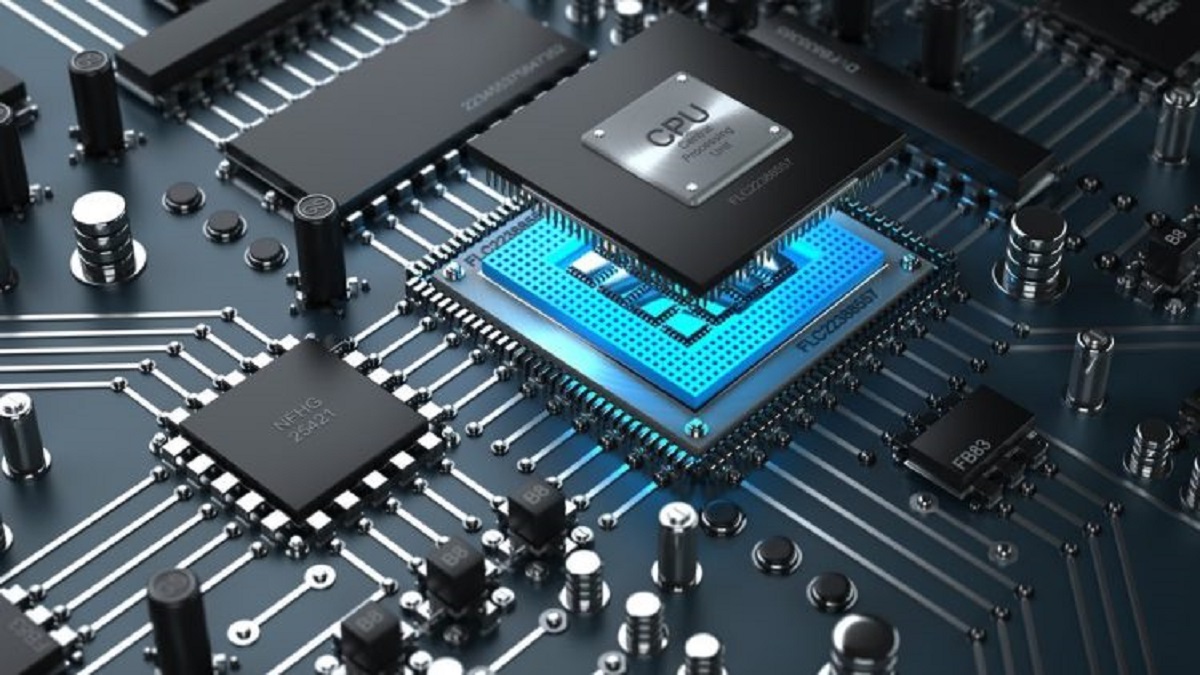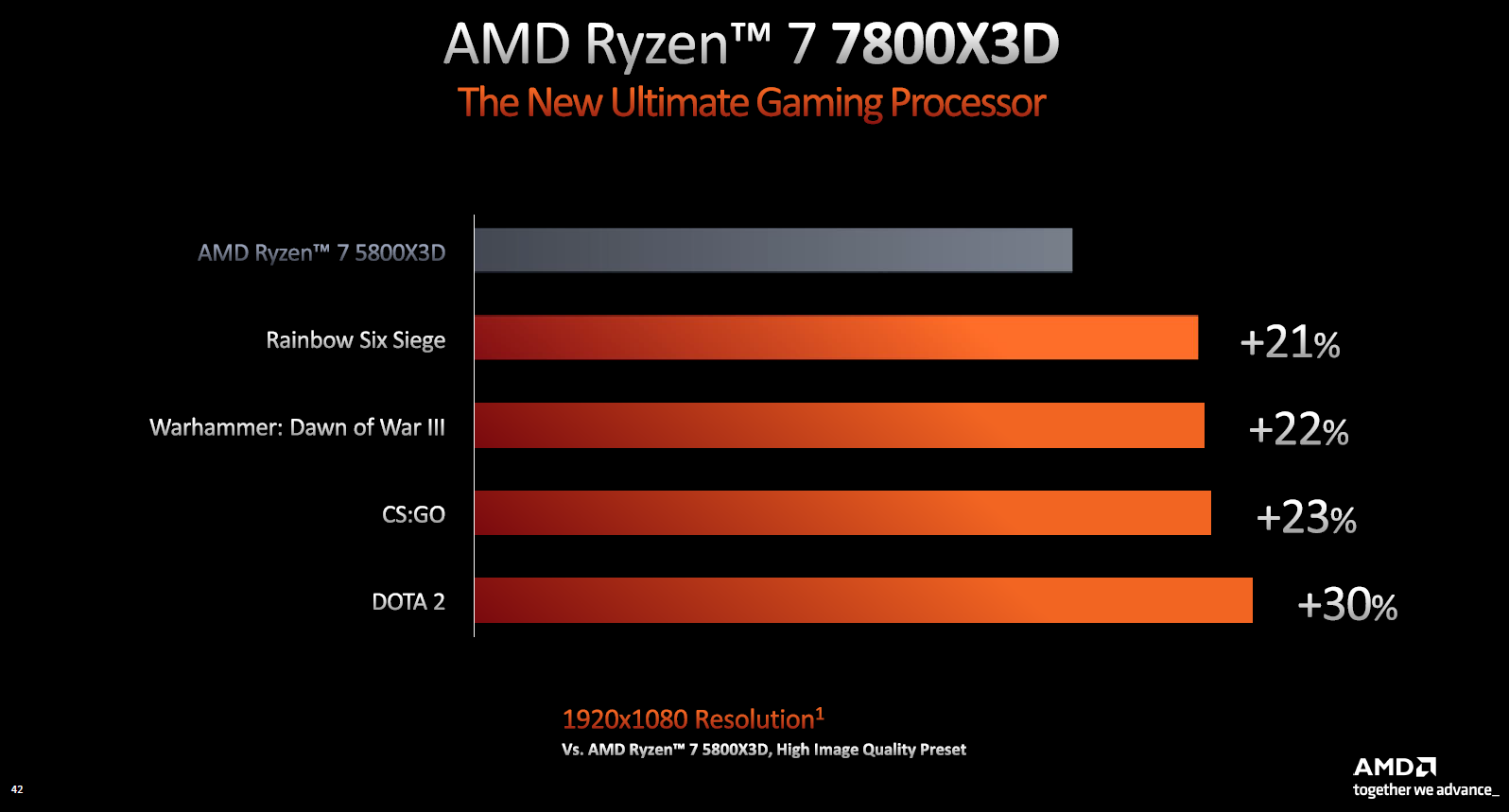Introduction
When it comes to computer performance, one of the key components that plays a crucial role is the Central Processing Unit (CPU). The CPU is often referred to as the “brain” of the computer, as it is responsible for executing instructions and performing calculations at lightning speed. But what makes a CPU fast? In this article, we will explore the various factors that contribute to the speed and performance of a CPU.
A CPU’s speed is determined by several factors, including clock speed, the number of cores, cache size, instruction set architecture, and many others. Understanding these factors can help us make informed decisions when choosing a CPU for our computing needs.
First and foremost, let’s talk about clock speed. The clock speed of a CPU refers to the number of cycles per second that it can execute. It is measured in gigahertz (GHz). The higher the clock speed, the more instructions it can process in a given time frame. A CPU with a higher clock speed will generally perform tasks faster than a CPU with a lower clock speed. However, it’s important to note that clock speed alone doesn’t determine the overall performance of a CPU.
Another essential factor to consider is the number of cores. A CPU can have multiple cores, which can handle instructions independently. This means that a CPU with more cores can execute multiple tasks simultaneously, resulting in improved multitasking capabilities. For example, a CPU with four cores can handle four separate tasks more efficiently than a CPU with only two cores. Applications that are specifically designed to take advantage of multiple cores can greatly benefit from a CPU with a higher core count.
Cache size is another vital aspect to consider when looking at CPU performance. The cache is a small amount of high-speed memory located inside the CPU that stores frequently accessed data. Having a larger cache size allows the CPU to quickly retrieve data and instructions, reducing the time it takes to access information from the main memory. This results in improved performance and responsiveness, especially in tasks that require frequent data retrieval.
Instruction Set Architecture (ISA) is a crucial factor that determines the compatibility and efficiency of software running on a CPU. Different ISAs offer varying capabilities and support different types of instructions. The choice of ISA can impact the overall performance and efficiency of the CPU. It is essential to choose a CPU with an ISA that is well-suited for the specific software applications you plan to use.
Clock Speed
Clock speed is often one of the first specifications that we look at when comparing CPUs. It refers to the number of cycles per second that a CPU can execute, typically measured in gigahertz (GHz). The higher the clock speed, the more instructions a CPU can process in a given time frame. However, it’s important to note that clock speed alone doesn’t determine the overall performance of a CPU.
Clock speed is a measure of how fast a CPU can execute instructions, but it doesn’t take into account other factors like the efficiency of the instruction pipeline or the number of cores. For example, a CPU with a higher clock speed may be faster at executing single-threaded tasks, but a CPU with a lower clock speed and more cores may perform better at multitasking.
In addition, not all CPU architectures are created equal. Two CPUs with the same clock speed may have different architectures, which can affect their performance. For example, a newer CPU architecture may be more efficient at executing instructions, even with a lower clock speed. This is why it’s important to consider other factors, such as the number of cores and cache size, when evaluating the performance of a CPU.
Furthermore, it’s worth mentioning that increasing the clock speed of a CPU can also lead to higher power consumption and heat generation. This is why you often see high-performance CPUs being accompanied by robust cooling solutions, such as liquid cooling or large heatsinks. The thermal design power (TDP) specification of a CPU indicates the maximum amount of power it can dissipate without overheating. It’s important to ensure that your system has adequate cooling to handle the heat generated by a high clock speed CPU.
In summary, clock speed is an important factor to consider when evaluating CPU performance, but it shouldn’t be the sole determining factor. The efficiency of the instruction pipeline, the number of cores, cache size, and architecture also play significant roles. It’s crucial to consider these factors holistically to ensure that you choose a CPU that meets your specific computing needs.
Number of Cores
The number of cores is a crucial factor in determining the performance and capabilities of a CPU. Simply put, a core is a processing unit within a CPU that can execute instructions independently. A CPU with multiple cores has the ability to handle multiple tasks simultaneously, leading to improved multitasking capabilities and overall performance.
In the past, CPUs typically had a single core. However, with advancements in technology, CPUs now come with multiple cores, ranging from two to even more than 64 cores in high-end server processors. Each core can handle one or more threads, allowing for concurrent execution of tasks. This means that a CPU with more cores can efficiently distribute the workload across multiple processing units, resulting in faster and more efficient performance.
The benefits of having multiple cores are particularly evident in tasks that can be divided into parallel processes. This includes activities such as video editing, 3D rendering, scientific simulations, and running virtual machines. By distributing the workload among different cores, these tasks can be completed much faster compared to a single-core CPU.
However, it’s essential to note that not all applications and tasks can take full advantage of multiple cores. Some applications are still designed to run on a single core, and their performance may not see a significant improvement on a CPU with more cores. In these cases, factors such as clock speed and cache size may have a more significant impact on performance.
Additionally, it’s worth considering the power consumption and heat generation implications of CPUs with multiple cores. CPUs with more cores tend to consume more power and generate more heat compared to their single-core counterparts. This is an important aspect to consider when choosing a CPU, especially if you have specific power and thermal requirements for your system.
In summary, the number of cores is a critical factor to consider when evaluating CPU performance. More cores allow for improved multitasking capabilities and parallel processing, leading to faster and more efficient performance in tasks that can be divided into parallel processes. However, the benefits of multiple cores may not be realized in all applications, and factors like clock speed, cache size, and power consumption should also be taken into account when selecting a CPU that meets your specific needs.
Cache Size
Cache size is an important consideration when it comes to CPU performance. The cache is a small, high-speed memory integrated into the CPU itself, designed to store frequently accessed data and instructions. It acts as a temporary storage space, allowing the CPU to quickly access information without having to retrieve it from the main memory, which is considerably slower.
Cache operates on the principle of locality, which means that data and instructions that are accessed frequently or in close proximity are more likely to be stored in the cache for faster retrieval. There are typically three levels of cache in a CPU: L1, L2, and L3. L1 cache is the smallest and fastest, located closest to the CPU cores. L2 cache is larger but slightly slower, and L3 cache, which is optional and not available in all CPUs, is the largest but also the slowest among the three levels.
The size of the cache plays a crucial role in CPU performance. A larger cache allows for a greater amount of data and instructions to be stored, increasing the likelihood of finding the required information in the cache rather than going to the main memory. This results in reduced latency and faster overall performance, especially in tasks that heavily rely on data retrieval, such as gaming, multimedia editing, and database operations.
However, it’s important to note that the benefits of cache size diminish as the data access patterns become less predictable. If an application frequently accesses a wide range of data that is not present in the cache, the cache hit rate decreases, and the performance advantages of a larger cache are reduced.
Cache size is often specified in kilobytes (KB) or megabytes (MB) and varies between different CPU models. CPUs with higher cache sizes tend to be more expensive, but they can offer significant performance improvements, particularly in applications that require frequent access to large datasets.
It’s also worth mentioning that cache sizes are highly dependent on the CPU architecture and may differ between different generations or manufacturers. Newer CPU architectures often include enhancements to the cache design and management, resulting in improved performance even with similar cache sizes.
In summary, cache size is an essential factor to consider when evaluating CPU performance. A larger cache allows for faster data retrieval and can significantly improve the performance of tasks that heavily rely on data access. However, the benefits of cache size may vary depending on the application’s data access patterns. It’s crucial to consider the specific requirements of your computing needs and balance the cache size with other factors like clock speed and number of cores to choose a CPU that suits your needs best.
Instruction Set Architecture (ISA)
Instruction Set Architecture (ISA) is a critical factor to consider when evaluating CPU performance. It refers to the set of instructions that a CPU can execute and the organization of these instructions. Different CPUs may have different ISAs, each with its own capabilities and limitations.
The ISA defines the range of instructions that a CPU can understand and execute. It includes basic operations such as arithmetic calculations, logical operations, memory access, and control flow. The design of the ISA impacts the CPU’s ability to perform specific tasks efficiently and influences its compatibility with different software applications.
Different software applications are often optimized for specific ISAs. Some may take advantage of advanced instruction sets that are specific to certain CPUs, while others may rely on more generic instruction sets. It’s crucial to choose a CPU with an ISA that is well-suited for the software applications you plan to use. For example, if you’re primarily using software that is optimized for Intel’s x86 ISA, you would benefit from choosing an Intel-based CPU.
In addition to software compatibility, the ISA can also influence the overall performance of a CPU. Some ISAs may include instructions that allow for more efficient execution of specific tasks. For example, SIMD (Single Instruction, Multiple Data) instructions enable parallel processing of data elements and can significantly accelerate multimedia and scientific applications that involve large datasets.
It’s important to note that the choice of ISA can also impact the availability of software and development tools. Popular ISAs, such as x86 and ARM, have a vast ecosystem of software and development resources, making it easier to find compatible applications and tools. Less common or specialized ISAs may have limited software support, which can impact the overall usability and compatibility of the CPU.
Lastly, it’s worth mentioning that the evolution of ISAs is an ongoing process. Newer CPU architectures often introduce enhancements and extensions to the ISA, improving performance and adding new features. It’s important to consider the latest ISA advancements when choosing a CPU to ensure that you benefit from the latest technologies and optimizations.
In summary, the Instruction Set Architecture is a crucial aspect to consider when evaluating CPU performance. The choice of ISA impacts software compatibility, performance, and the availability of software and development resources. By choosing a CPU with an ISA that aligns with your software requirements and considering the latest advancements in ISA, you can ensure that you have a CPU that delivers optimal performance for your specific computing needs.
Pipelining
Pipelining is a technique used in modern CPUs to improve efficiency and performance. It involves breaking down the execution of instructions into smaller stages, allowing for multiple instructions to be processed simultaneously in different stages of the pipeline. This technique enables overlapping of different stages of instruction execution and improves the overall throughput of the CPU.
The pipelining process consists of several stages, including instruction fetch, decode, execute, memory access, and write back. Each stage handles a specific part of the instruction execution process. By dividing the execution of instructions into these stages and having multiple instructions in various stages at any given time, the CPU can have multiple instructions in progress simultaneously, reducing idle time and maximizing utilization.
One of the main advantages of pipelining is improved instruction throughput. While a CPU without pipelining would have to wait for an instruction to complete before starting the next one, a pipelined CPU can have different instructions in different stages of the pipeline, allowing for a continuous flow of instructions.
However, pipelining is not without challenges. One of the key challenges is the occurrence of pipeline stalls. A pipeline stall happens when there is a dependency between instructions or when an instruction requires the result of a previous instruction that has not yet completed. In such cases, the pipeline needs to stall or pause until the dependency is resolved, resulting in a decrease in overall performance.
To mitigate the impact of pipeline stalls, modern CPUs employ various techniques. One such technique is branch prediction, which attempts to guess the outcome of a branch instruction before it is known. By predicting the branch outcome correctly, the pipeline can continue processing instructions without waiting for the actual branch result, reducing pipeline stalls.
Another technique used in pipelined CPUs is out-of-order execution. In this technique, the CPU rearranges the order of instructions dynamically to maximize utilization of pipeline stages. Instructions that are not dependent on each other can be executed out of order, reducing the impact of pipeline stalls and improving overall performance.
Pipelining is a complex process that requires careful design and coordination between different stages of the execution pipeline. It is often combined with other optimization techniques, such as superscalar execution, where multiple instructions are executed in parallel within a single pipeline stage.
In summary, pipelining is a technique used in modern CPUs to improve performance and efficiency by breaking down the execution of instructions into smaller stages. It allows for the parallel execution of multiple instructions, increasing throughput and reducing idle time. While pipeline stalls can impact performance, techniques such as branch prediction and out-of-order execution are employed to mitigate their effects. Understanding pipelining is essential for evaluating and comparing the performance of different CPUs.
Out-of-Order Execution
Out-of-order execution is a technique used in modern CPUs to enhance performance and optimize instruction execution. Traditionally, instructions are executed in the order they appear in a program. However, out-of-order execution allows the CPU to rearrange the order of instructions dynamically to maximize the utilization of available execution resources.
The goal of out-of-order execution is to minimize the occurrence of pipeline stalls and increase the overall throughput of the CPU. The CPU analyzes the dependencies between instructions and determines which instructions can be executed independently. Instructions that are not dependent on each other can be executed out of order, regardless of their original order in the program.
By executing instructions out of order, the CPU can effectively use idle execution units and resources, reducing any pipeline stalls caused by dependencies. This is particularly beneficial in situations where there are dependencies or delays, such as when executing conditional branches or handling data dependencies.
To enable out-of-order execution, CPUs usually have a dedicated unit called the reorder buffer or reservation station. This unit keeps track of the original order of instructions and ensures that the results are committed in the correct order, preserving the program’s semantics. The reorder buffer also handles dependency checking and ensures that instructions are executed in a way that maintains data integrity.
Out-of-order execution is commonly used in conjunction with other CPU optimization techniques such as pipelining and branch prediction. Branch prediction helps reduce the impact of conditional branches by speculatively executing instructions along the predicted branch path. By combining branch prediction with out-of-order execution, the CPU can effectively hide the latency caused by branch mispredictions through speculative execution.
Although out-of-order execution can significantly improve performance, it introduces some challenges and considerations. The CPU’s ability to identify independent instructions and execute them out of order relies on sophisticated hardware logic and algorithms. There may also be resource limitations that restrict the number of instructions that can be executed out of order simultaneously.
Furthermore, out-of-order execution can potentially introduce issues such as out-of-order memory accesses, which may violate the sequential consistency of a program. To address this, CPUs employ techniques like memory dependency tracking and memory disambiguation, ensuring that memory operations are executed in the correct order when necessary.
In summary, out-of-order execution is a powerful technique used in modern CPUs to improve performance by dynamically rearranging the order of instructions. It allows the CPU to utilize available execution resources efficiently and minimize pipeline stalls. By combining out-of-order execution with other optimization techniques, CPUs can further enhance performance and maximize throughput. However, the implementation of out-of-order execution involves complex hardware logic to maintain data integrity and preserve program semantics.
Branch Prediction
Branch prediction is a technique used in modern CPUs to improve performance by minimizing the impact of conditional branches on instruction execution. When a CPU encounters a branch instruction, such as an if statement or a loop, it needs to determine the next instruction to execute based on the outcome of the branch condition. Branch prediction helps the CPU to make an educated guess or prediction about the taken or not-taken outcome of the branch.
The goal of branch prediction is to mitigate the performance penalty caused by incorrect predictions. If the CPU incorrectly predicts the outcome of a branch, it may flush the instructions that were speculatively executed based on the wrong prediction, resulting in wasted execution cycles and a decrease in performance. Therefore, accurate branch prediction is crucial for maximizing the CPU’s throughput.
There are different strategies or algorithms employed by CPUs for branch prediction. One common technique is the use of branch prediction tables or branch history tables. These tables maintain a record of the outcomes of previous branches and use this historical data to predict the outcome of future branches. The branch history information can be stored per branch or globally for all branches in the program.
Another technique used in branch prediction is the use of branch target buffers. Branch target buffers store the target addresses of previous branches and use this information to predict the target address of future branches. This helps improve the accuracy of branch predictions, especially when branches have known target destinations.
To further enhance branch prediction accuracy, CPUs often employ advanced prediction mechanisms such as dynamic branch prediction. Dynamic branch prediction algorithms dynamically adjust their prediction strategies based on the observed behavior of branches at runtime. These algorithms use heuristics, statistical analysis, or machine learning to improve prediction accuracy.
Branch prediction is closely related to other CPU optimization techniques such as out-of-order execution and speculative execution. By predicting the branch outcome accurately, the CPU can speculatively execute instructions along the predicted path, effectively hiding the branch latency and maximizing instruction throughput.
While branch prediction techniques are generally effective, there are cases where predictions can be challenging, such as in highly irregular or unpredictable branching patterns. In these situations, the branch prediction accuracy may be lower, leading to a higher rate of branch mispredictions and a potential impact on performance.
In summary, branch prediction is a critical technique used in modern CPUs to improve performance by predicting the outcome of conditional branches. Accurate branch prediction helps the CPU speculatively execute instructions, minimizing the impact of branch latency on instruction throughput. Different strategies and algorithms, such as branch prediction tables and branch target buffers, are employed to enhance prediction accuracy. Additionally, dynamic branch prediction adapts predictions based on runtime behavior. While branch prediction is generally effective, complexities in branching patterns can challenge prediction accuracy in certain scenarios.
Memory Bandwidth
Memory bandwidth is a critical factor that influences the performance of a CPU. It refers to the rate at which data can be transferred between the CPU and the main memory (RAM). The memory bandwidth determines how quickly the CPU can access data from memory, which is crucial for executing instructions and performing computations efficiently.
Modern CPUs rely on fast access to memory to retrieve instructions and data needed for computation. The memory subsystem is responsible for providing a sufficient amount of data to keep the CPU cores busy. The higher the memory bandwidth, the more data can be transferred between the CPU and memory in a given time frame, resulting in improved performance.
The memory bandwidth depends on various factors, including the memory technology, the number of memory channels, and the memory clock frequency. Different memory technologies, such as DDR4 or DDR5, have different bandwidth capabilities. Memory channels refer to the number of physical connections between the CPU and the memory modules. CPUs with multiple memory channels can access data in parallel, increasing the overall memory bandwidth. The memory clock frequency determines the speed at which data can be transferred between the CPU and memory, with higher frequencies allowing for faster data transfers.
High memory bandwidth is particularly crucial for memory-intensive applications, such as video editing, scientific simulations, and data analysis. These applications often require frequent access to large amounts of data stored in memory. A low memory bandwidth can become a bottleneck, slowing down the overall performance of the CPU and causing delays in data retrieval.
To improve memory bandwidth, CPUs often employ techniques such as memory prefetching. Memory prefetching involves predicting the data that will be accessed in the near future and proactively fetching it from memory into the CPU’s cache. This helps reduce the latency of memory accesses and keeps the CPU cores well-fed with data, improving overall performance.
It’s important to note that memory bandwidth is not the only factor that affects memory performance. Other factors like memory latency, cache efficiency, and the efficiency of the memory controller also play significant roles. A CPU with high memory bandwidth but high latency or inefficient cache management may not fully utilize the available memory bandwidth.
In summary, memory bandwidth is a crucial factor in determining CPU performance. It represents the rate at which data can be transferred between the CPU and memory and influences how quickly the CPU can access data. Higher memory bandwidth allows for faster data retrieval, resulting in improved overall performance. However, memory bandwidth is just one aspect of memory performance, and factors like latency, cache efficiency, and memory controller efficiency should also be considered when evaluating the memory subsystem’s impact on CPU performance.
Thermal Design Power (TDP)
Thermal Design Power (TDP) is an important specification that denotes the maximum amount of power that a CPU can dissipate under typical operating conditions. It is measured in watts and indicates the amount of heat that the CPU generates. The TDP is crucial in determining the cooling requirements and overall system power management.
The TDP serves as a guideline for system builders and consumers to choose an appropriate cooling solution for the CPU. It ensures that the CPU remains within safe operating temperatures, preventing overheating and potential damage to the hardware. Failure to adequately cool a high TDP CPU can result in performance throttling or system instability.
The TDP is influenced by various factors, including the CPU’s architecture, manufacturing process, clock speed, and the number of cores. Generally, CPUs with higher clock speeds and more cores tend to have higher TDP ratings, as they require more power to execute instructions and perform calculations.
It’s important to note that the TDP does not represent the actual power consumption of the CPU. The TDP is a thermal specification, and the actual power consumption can vary depending on the workload and CPU’s power management features. CPUs often incorporate power-saving technologies, such as dynamic voltage scaling and frequency scaling, to reduce power consumption during periods of lower activity.
The TDP not only plays a role in determining the cooling solution but also affects the power requirements of the entire system. System builders need to consider the combined TDP of all components, including the CPU, GPU, and other peripherals, to ensure that the power supply unit can handle the load.
In recent years, there has been a focus on optimizing the power efficiency of CPUs to minimize power consumption and heat generation. Lower TDP CPUs are often preferred for energy-efficient systems or applications with specific power constraints.
It’s worth mentioning that the TDP is a standardized specification provided by the CPU manufacturer. However, it’s essential to consider real-world scenarios and potential variations in power consumption. Factors such as ambient temperature, system airflow, and workload intensity can affect actual power consumption and heat generation.
In summary, Thermal Design Power (TDP) is a crucial specification in determining CPU cooling requirements and overall system power management. It denotes the maximum amount of power a CPU can dissipate under typical operating conditions, playing a significant role in choosing the appropriate cooling solution. The TDP is influenced by various factors, including the CPU’s architecture, clock speed, number of cores, and manufacturing process. System builders need to consider the combined TDP of all components to ensure a stable and efficient system.
Conclusion
In conclusion, several factors contribute to the speed and performance of a CPU. Clock speed, measured in gigahertz, determines how many instructions a CPU can process in a given time frame. However, it is important to consider other factors such as the number of cores, cache size, instruction set architecture, and memory bandwidth to accurately assess CPU performance.
Multiple cores allow for parallel execution of tasks, especially in applications optimized for multi-threading. A larger cache size enables faster data retrieval, reducing the time it takes for the CPU to access information from memory. The instruction set architecture (ISA) of a CPU affects software compatibility and performance, so choosing a CPU that is compatible with the applications you use is important.
Pipelining and out-of-order execution are techniques that further enhance CPU performance. Pipelining breaks down instruction execution into stages, allowing for parallel processing, while out-of-order execution reorders instructions to maximize utilization of available resources.
Consideration of thermal design power (TDP) is vital to choose an appropriate cooling solution for the CPU and ensure its safe operation within specified temperature limits. Memory bandwidth determines the rate at which data can be transferred between the CPU and memory, impacting overall performance, especially in memory-intensive tasks.
In summary, CPU performance is influenced by a combination of factors, and understanding these factors helps in selecting the right CPU for specific computing needs. It is crucial to strike a balance between clock speed, the number of cores, cache size, instruction set architecture, memory bandwidth, and TDP to optimize overall CPU performance and ensure efficient and reliable system operation.









